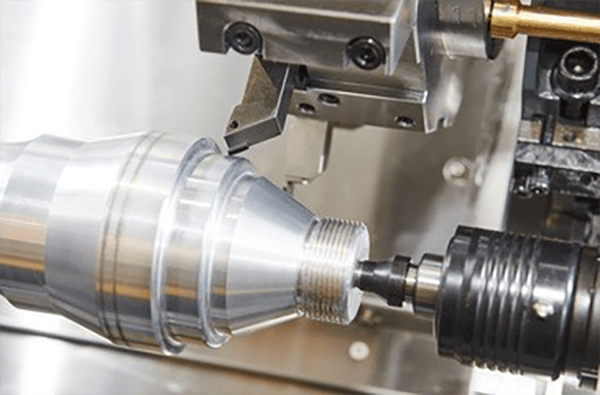
Delivering appointed top-layer smoothness for a manufactured item is highly significant.
- Surface finish callouts in engineering drawings provide the exact specifications for the finish of a part
- Drawings commonly cite Ra, meaning root mean square average, to measure texture
- Decoding surface notes is important for ensuring components achieve required performance
- Chosen finish influences lubrication retention, friction behavior, and part life
- Correctly reading the finish notation is necessary to attain the intended result
Precision Principles of CNC Machining

Robotic-assisted machining defines a modern manufacturing practice through automated code the equipment produces detailed patterns with tight tolerances.
- The technology facilitates production of complex parts across many materials
- CNC adaptability suits industries including aerospace and automotive sectors
- G-code driven machining maintains reliable consistency across batches
From prototyping to mass production CNC machining plays a pivotal role in shaping modern manufacturing
Interpreting CNC Specifications
Understanding equipment specifications can look intimidating initially
Nevertheless simple study and a stepwise method let you read technical specifications
Begin by identifying the key parameters such as spindle speed feed rate accuracy work envelope and controller type
Every listed attribute influences the equipment’s operational capacity.
Example: increased spindle revolutions aid soft materials; accelerated feed raises production.
Knowing these correlations permits matching machine capabilities to your specs
Be sure to refer to vendor documentation completely.
Those resources usually offer helpful explanations and clarify jargon
What You Should Know About CNC Machines
CNC systems refer to programmed machine tools for accurate automated part production across materials They accept digital G-code to steer tools and control machining actions.
- Several forms of CNC equipment are mills, lathes, routers, plasma cutters
- Machining methods apply across metals, plastics, wood, and composite substrates
- Besides that CNC systems permit speedy prototyping and short production runs for businesses and research groups
Understanding CNC Machinery
CNC machines represent a remarkable fusion of mechanical precision and sophisticated software control Automated tools implement code to produce elementary parts and sophisticated assemblies Key principle turns electronic models into physical artifacts.
- CNC machining
- Programmatic production integration
It comprises controlled axis moves directed by programmed code Shop technicians tune machining parameters, supervise production, and certify product accuracy.
Why Surface Finish Matters in CNC Machining
Obtaining required finish during machining is essential It strongly influences part functionality and visual appeal Substrate properties, machining variables, and post-process methods shape surface outcome.
A polished finish improves wear resistance whereas coarse texture can hinder performance Numerical control machining supplies multiple methods and cutters to obtain target textures.
- For instance varying cutting insert shapes |carbide alloys|tool speed tuning to deliver finish
- Moreover post-machining steps like polishing or sanding improve surface quality
Understanding the relationship between machining parameters and surface finish is essential for achieving optimal results in CNC machining operations.
CNC Machine Basics: From Operation to Applications
Precision production uses machine control software to shape parts from different material classes They interpret digital toolpaths to carve detailed designs reliably Understanding machine control, programming, and tooling choices is crucial for effective machining
Industry applications include aircraft, automotive, medical, electronics, and beyond From aircraft parts to precision plastic molds, CNC creates complex high-quality items
Surface Finish Specification Guidelines
Right specification of finish is necessary for CNC-produced parts It helps confirm that the product aligns with performance and cosmetic needs Engineers generally specify surface quality using the Ra roughness notation Shown in micrometers or inches, the measurement denotes typical roughness magnitude.
Consider needed smoothness and the part’s application to determine finish requirements

Often a polished surface is selected when precise tolerance and fit are required
Rugged finishes sometimes serve parts that need enhanced traction or grip
Provide specific finish callouts in engineering drawings to communicate texture needs List Ra value plus supplementary process guidance like polishing or coating.
Recall that well-defined roughness notes help ensure production success
Classification of CNC Machines and Uses
CNC technologies cover several machine formats that handle a range of job types They leverage CAD/CAM designs to instruct cutters for accurate and efficient fabrication.
- Milling centers craft intricate contours cavities and surfaces by subtractive cutting
- Grinders use abrasive wheels to finish and size parts to fine tolerances
- Plasma cutters employ ionized gas arcs to sever metal quickly and accurately
Choosing the right CNC depends on production goals material type and required accuracy Unique machine capabilities support varied industry needs such as automotive, aerospace, and medical.
Achieving Optimal Surface Finish with CNC Machining
Delivering optimal surface quality is necessary and CNC processes are well-suited to achieve it By leveraging precise control over cutting parameters such as feed rate spindle speed and tool geometry machinists can effectively manipulate the material removal process to produce surfaces with minimal imperfections In addition top-grade tooling and adequate lubrication help generate finer surfaces By choosing tailored toolpaths and precise setups operators can deliver parts with outstanding finishes.
Programming Strategies for Surface Finish
Mastering surface finish during CNC programming is crucial for achieving desired quality outcomes Cutting parameter selection—feed, speed, tool geometry—controls surface finish Meticulous parameter tuning together with suitable coolant use promotes smoother finishes.
- Plus regular inspection and maintenance of tools copyright finishing standards Furthermore regular tool maintenance and inspection are essential for ensuring a consistent cnc full form machine and high-quality surface finish over time Moreover scheduled tool maintenance and inspection preserve surface performance
- In pursuit of improved finish examine material properties, roughness goals and application
- Simulated machining supports parameter refinement to mitigate surface issues
- In addition periodic tool servicing and checks secure consistent surface quality
